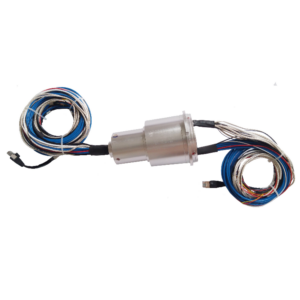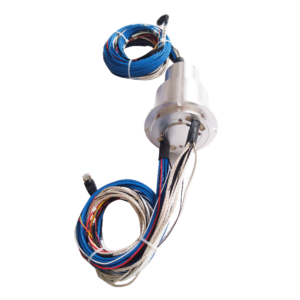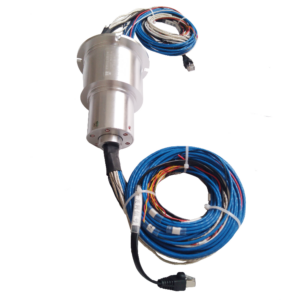Conductive slip rings can be divided into mercury conductive slip rings, optical fiber conductive slip rings, network conductive slip rings, high current conductive slip rings, etc. according to the medium they transmit. Among them, optical fiber conductive slip rings can be divided into single-channel optical fiber conductive slip rings and multi-channel optical fiber conductive slip rings, and network conductive slip rings can be divided into Gigabit and 100M.
Then perhaps many people will ask, the same is the network conductive slip ring, so what is the difference between Gigabit and 100M conductive slip rings? Today I will tell you about the difference between Gigabit and 100M conductive slip rings.



Network conductive slip rings are also called Ethernet slip rings. Ethernet slip rings are specially designed for 250MHz frequency signals and are designed to transmit 100M/1000M Ethernet signals. They have the advantages of stable transmission, no packet loss, no string code, small return loss, small insertion loss, strong anti-interference ability, and support for POE. Among them, the biggest difference between 100M conductive slip rings and Gigabit point conductive slip rings is the different transmission speeds. Just like our home network, the transmission speed of Gigabit network is definitely much higher than that of 100M network.
It seems to be just a simple difference in network transmission speed, but for our slip ring manufacturers, it is a very big difference. First of all, 100M network conductive slip rings generally transmit four-core 100M network cables, and Gigabit network conductive slip rings generally transmit eight-core Gigabit network cables, but in terms of the number of cables transmitted, Gigabit network conductive slip rings are on both sides of 100M network conductive slip rings. Secondly, Gigabit network is generally used on large industrial equipment, and there are generally strong signal interference sources on the equipment, so Gigabit network conductive slip rings generally need external signal shielding processing. The conventional means of this processing is to add shielding wires inside the Gigabit network.
In general, 100M network conductive slip rings and Gigabit network conductive slip rings can be said to be completely two different schemes of conductive slip rings, because the environment and equipment used by the two are different, and the technical requirements and use requirements for conductive slip rings are different, so the difference between the two can be said to be relatively large. In a word, the requirements for conductive slip rings are based on the specific requirements of customers. We will make the kind of conductive slip rings that the customer’s equipment requires.
